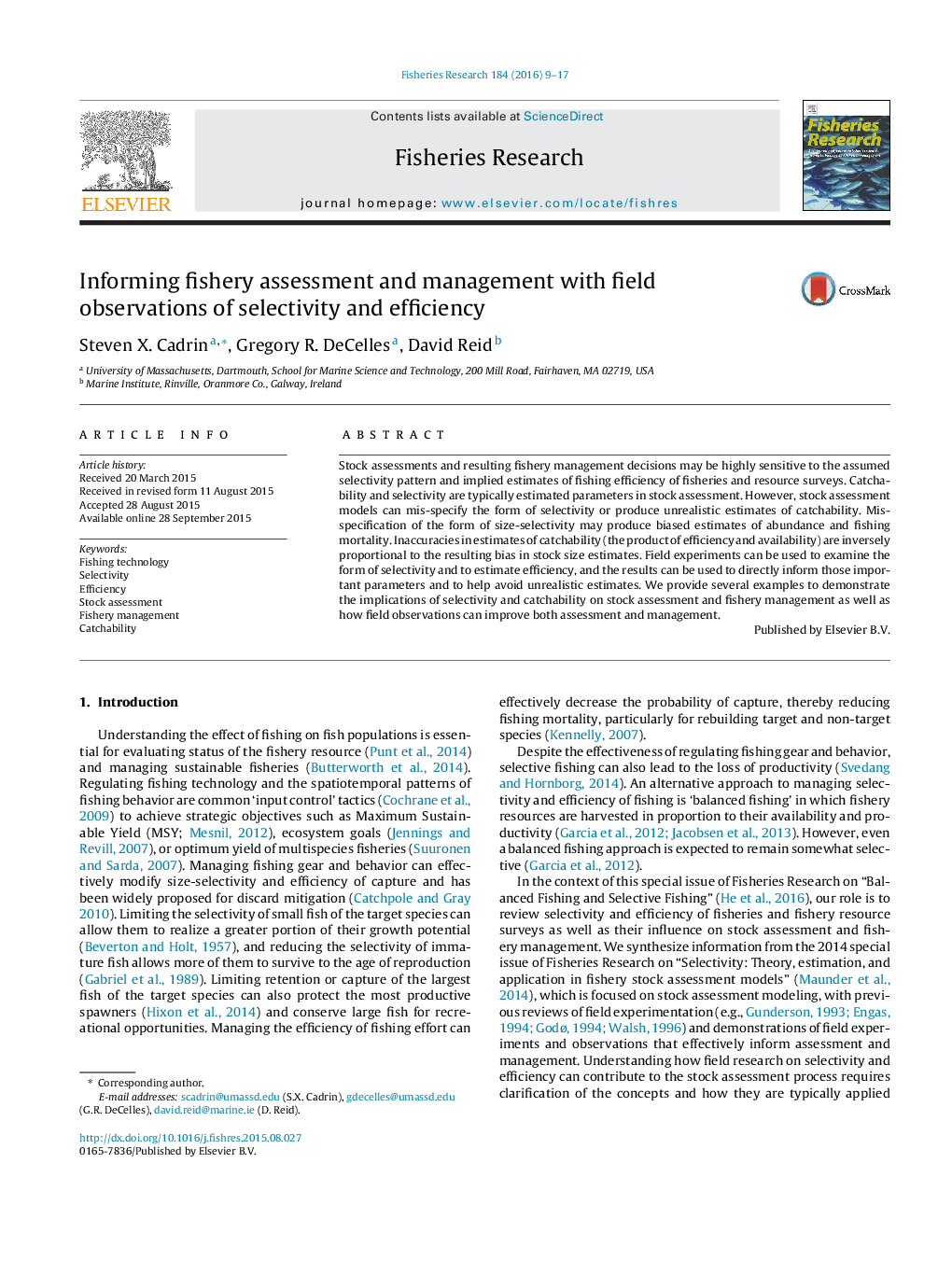| Article ID | Journal | Published Year | Pages | File Type |
|---|---|---|---|---|
| 6385273 | Fisheries Research | 2016 | 9 Pages |
â¢Selectivity and efficiency of fishing gear are critically important for stock assessment and fishery management, but they are often poorly informed model estimates.â¢Stock assessments are highly sensitive to the assumed form of selectivity.â¢Field research is valuable for informing the form of selectivity and relative efficiency of fishing gear.
Stock assessments and resulting fishery management decisions may be highly sensitive to the assumed selectivity pattern and implied estimates of fishing efficiency of fisheries and resource surveys. Catchability and selectivity are typically estimated parameters in stock assessment. However, stock assessment models can mis-specify the form of selectivity or produce unrealistic estimates of catchability. Mis-specification of the form of size-selectivity may produce biased estimates of abundance and fishing mortality. Inaccuracies in estimates of catchability (the product of efficiency and availability) are inversely proportional to the resulting bias in stock size estimates. Field experiments can be used to examine the form of selectivity and to estimate efficiency, and the results can be used to directly inform those important parameters and to help avoid unrealistic estimates. We provide several examples to demonstrate the implications of selectivity and catchability on stock assessment and fishery management as well as how field observations can improve both assessment and management.
